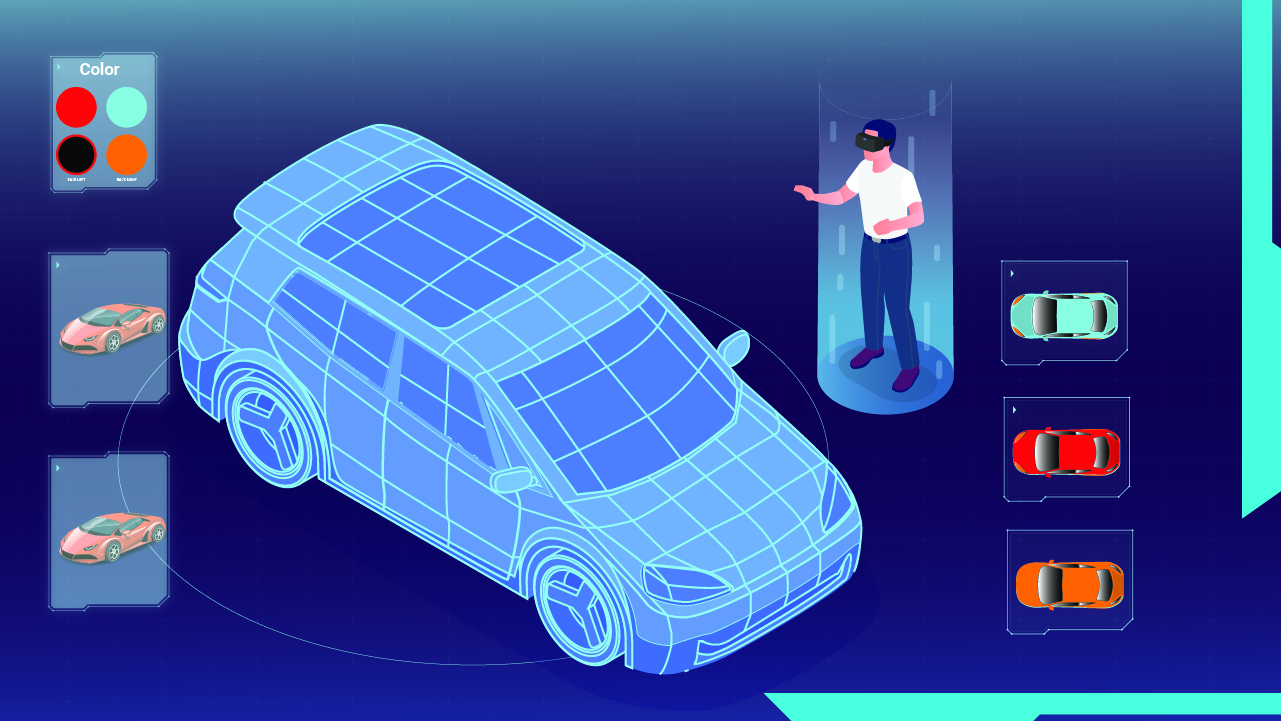Virtual Reality(VR) is generally associated with the gaming and entertainment industries. But VR is a unique technology that transports users to a simulated environment. It creates a fully immersive experience by shutting out the user’s real-world, so everything the user sees, hears, and senses is part of the simulated environment.
In the automotive industry, for example, VR has been used to completely revolutionize the process of designing new vehicles. And we will be discussing it in detail below.
The beginning:
Automotive manufacturers have been experimenting with VR to design vehicles for the last several years. But it only became popular in 2020 during the global pandemic when the automotive industry hit a slump.
The lockdown restrictions forced many companies, including automotive manufacturers, to temporarily close their offices for months in 2020. Automotive design teams were temporarily unable to work together under the same roof, so they were forced to find new ways to collaborate on future designs. That is why they turned to VR to design vehicles.
And now, even though the stay-at-home orders have been lifted, many automotive manufacturers continue using this technology as it is found to simplify the design process.
How is VR being used to design cars?
Traditionally the design process begins with several meetings where designers can share ideas and get feedback. Post the meetings, the designers will create concept sketches to present to the company’s decision-makers.
Once a design is approved, a physical prototype is made, which will then go through multiple rounds of changes. A new prototype will be made each time a change is suggested.
The process will continue until a design is finalized. Thus, bringing us to the end of the long, tedious process.
However, if the team is using virtual reality technology, they will not need to go through the trouble of creating multiple physical prototypes. Instead, the design team can create a virtual model of the vehicle once the concept sketch has been approved.
Designers can view it in a three-dimensional work environment by putting on a virtual reality headset. They can use handheld controls to sketch lines, make edits, and manipulate the design of the vehicle. These controllers also let them rotate the model so they can view it from any angle.
Designers can even place a virtual driver behind the wheel or step inside the virtual model to view the interior.
The design will still go through multiple rounds of edits, but all changes will be made directly to the virtual model in real-time rather than as a prototype.
Benefits:
- Speeds up the design process.
- Eliminates the need to create multiple physical prototypes, which are expensive and time-consuming to produce.
- Gives a 360° view of the design, which helps designers spot errors easily.
- Lets designers collaborate remotely from any part of the world.
- Updates the changes in real-time.
Key Takeaway:
In the automotive industry, VR is also used in manufacturing, sales, staff training, and everything in-between. So, given its wide variety of uses, we can be sure that VR has a long and bright future in the automotive industry.




